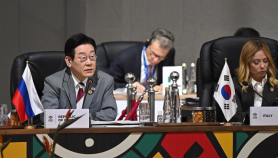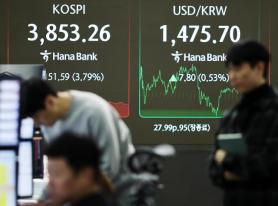
Nvidia announced record earnings on Nov. 19, with third-quarter revenue reaching $57 billion, a 62% increase from the previous year. Despite a net profit margin of 53% and net income of $31.9 billion, its stock fell 6.8% the next day. Wall Street attributes this to extended collection periods for big tech companies like Google, Meta, Microsoft, and Amazon, indicating uncertain returns on AI investments.
OpenAI faces more severe challenges. Microsoft, its parent company, has invested $13 billion since 2023, with $11.6 billion already spent. OpenAI's quarterly losses are estimated at $11.5 billion, based on Microsoft's third-quarter report.
Nvidia's $100 billion investment in OpenAI involves building data centers and purchasing GPUs, creating a cycle that inflates revenue. Wall Street labels this an 'AI Ponzi Scheme.' Experts warn of a potential collapse if OpenAI fails to monetize.
The bubble is expected to burst between 2026 and 2027. Companies that survive will be those integrating AI into manufacturing, healthcare, energy, and defense, not those boasting about large language model parameters. High Bandwidth Memory (HBM) is crucial for AI infrastructure.
Jensen Huang, Nvidia's CEO, stated in October 2025, "Without HBM, there is no AI." A single Blackwell B200 GPU requires 192GB of HBM3e, costing $20,000. Over 50% of Nvidia's data center revenue costs are HBM-related, proving its importance.
South Korea's SK Hynix and Samsung Electronics control 80% of the global HBM market. SK Hynix's stable yield of HBM3e and exclusive supply to Nvidia drive this dominance. Micron lags in technology, and China is still developing. Yole Group predicts the HBM market will grow from $34 billion in 2025 to $100 billion by 2030.
If South Korea maintains its 80% market share for five years, annual exports could reach $80 billion by 2030, doubling the country's 2024 semiconductor exports. A drop to 40% market share would cut exports to $40 billion, with a $200 billion cumulative profit difference. HBM is not just an economic asset but a strategic resource in the AI era, enhancing South Korea's geopolitical standing.
The U.S. is investing $52.7 billion through the CHIPS Act, with Intel receiving $8.5 billion, TSMC $6.6 billion, Samsung $4.7 billion, and Micron $6.2 billion. China is investing $48.4 billion in semiconductors. South Korea's control of 80% of the HBM market is akin to the Middle East's hold on oil during the manufacturing era.
However, this lead is not permanent. Samsung's HBM3e approval from Nvidia was delayed by eight months, affecting its market share. China's CXMT aims to mass-produce HBM3 by 2026 and HBM3e by 2027, with state funding. Micron plans to catch up with HBM4 by 2026. A single misstep could be costly, as seen with Japan's reliance on rare earths from China.
TrendForce warns of potential HBM oversupply and price drops post-2026, advising South Korea to maintain market dominance through production expansion. The solution is simple: elevate HBM to a national strategic asset and legislate an 'HBM Sovereignty Act' to secure South Korea's lead. This support should be viewed as 'defense spending' in the AI race, not corporate welfare.
Five steps are needed: establish six HBM4 and HBM5 plants in the Yongin Semiconductor Cluster under a separate entity, with 49% state ownership and 51% Samsung and SK technology. Half the profits would be distributed as national dividends. This approach mirrors U.S. and Chinese strategies, doubling factory output through government and societal participation.
Second, invest 50 trillion won in 'HBM defense spending' from 2026 to 2030, offering 60% investment tax credits and 100% R&D tax credits. Yole's forecast suggests this could yield a 400 trillion won profit over five years.
Third, designate HBM as a controlled export item, similar to the U.S.'s control over ASML's EUV technology. This would allow South Korea to adjust supply as needed, positioning HBM as an 'AI weapon' and maintaining a neutral advantage in U.S.-China tech conflicts.
Fourth, achieve 100% domestic production of key materials and equipment within five years, reducing reliance on Japanese materials and American equipment through focused investment in materials and components.
Fifth, address the talent shortage, the greatest risk to maintaining a lead. Secure 10,000 domestic and international Ph.D. holders, offer immediate permanent residency to foreign talent, expand semiconductor department enrollment at universities like KAIST fivefold, and provide government-funded tuition support.
During the California Gold Rush, it was the jeans sellers who profited, regardless of who found gold. Similarly, HBM guarantees stable demand, regardless of who strikes gold in AI. To avoid future regret, South Korea must pass bold semiconductor support laws and an 'HBM Sovereignty Act.' This is a once-in-a-century opportunity, and the decision lies with political leaders. South Korea's choice will determine whether it becomes a 'memory empire' in the AI era or remains a parts supplier.
About the author
* This article, published by Aju Business Daily, was translated by AI and edited by AJP.
Copyright ⓒ Aju Press All rights reserved.



